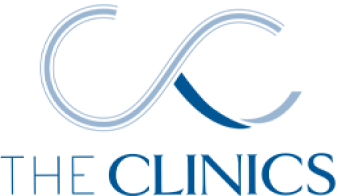
Everything You Need to Know About Rhinoplasty
Let’s start with a truth people often overlook: a nose job is rarely just about appearance.
Sure, that’s what brings most patients in. But once they sit down and start talking, it turns out many are also dealing with something deeper—difficulty breathing, chronic congestion, sleep issues. It’s all connected.
Now, here’s a number worth paying attention to.
In 2024, the AAFPRS (that’s the American Academy of Facial Plastic and Reconstructive Surgery) shared a stat: more than 80% of their surgeons said at least 10% of their rhinoplasty consultations involved people wanting to revise a previous procedure. That’s not rare. That’s common.
Which makes sense. This surgery is precise. Small changes—millimeters, really—can make or break the result. And unlike other cosmetic procedures, a botched outcome here isn’t just visible. It can affect how you breathe every single day.
Some patients come in asking for a more balanced profile. Others want relief from airflow problems caused by a deviated septum. And many are hoping to achieve both, often through something called rhinoseptoplasty.
This guide breaks it down for 2025. What to ask. What’s possible. What to avoid. Whether you’re curious, planning, or trying again—we’ve written this for you.
What Brings You In?
When people show up to talk about getting their nose done, the reasons usually fall into two camps.
Some want a visual change—maybe the tip feels bulky, or there’s a bump they’ve hated for years. Others say something more basic: I just want to breathe normally.
And honestly, lots of people fall somewhere in between.
If you’ve ever had that constant blocked-nose feeling, or had trouble sleeping because one side of your nose just doesn’t work right—that’s not uncommon. It might be a structural issue inside. Something like a deviated septum.
But even then, appearance still matters. You might be hoping for a smoother profile or better facial balance. And that’s completely valid. This kind of surgery can address both, but only if the plan is clear from the beginning.
Here’s where most people go wrong: they don’t actually say what’s bothering them. They think it’s obvious. It’s not.
So your job, before anything else, is to be honest about your goal. Not just “a better nose.” Be specific. Is it the breathing? The look? Both? That’s where it all starts.
When Breathing’s the Issue
Not everyone comes in because they dislike how their nose looks. Some just can’t breathe right—and it’s been that way for a while.
Maybe one side’s always blocked. Maybe they snore. Or they’ve tried everything—sprays, steam, nose strips—and still feel like they’re forcing every breath.
In a lot of these cases, it comes down to something structural. There’s a thin wall inside the nose that separates both sides. If it’s off-center, which happens more often than people think, it can block airflow without any visible signs.
At that point, no amount of home remedies will help.
That’s when surgery becomes an option—not for looks, but for relief. The procedure focuses on fixing what’s off inside. Not sculpting. Not refining. Just helping air move the way it should.
And here’s something patients often notice afterward, even if they didn’t expect it: once things are straightened out internally, the outside tends to look a little more balanced too.
When It’s About Balance, Not Perfection
Sometimes it’s not easy to explain.
You look at your face, and nothing’s wrong, exactly—but the nose draws your eye first. Not your smile. Not your eyes. Just… your nose.
That doesn’t mean it’s big or crooked or “bad.” It might just be the proportions. The way it fits—or doesn’t.
People usually mention little things.
“The bridge feels too sharp in side photos.”
“The tip drops when I laugh.”
“My features look softer… except there.”
These aren’t dramatic complaints. They’re details that add up.
This type of surgery isn’t about copying someone else’s nose. It’s not about trends. It’s about tuning your features so they feel connected—less distracting, more aligned.
No hard lines. No overdone results.
Just enough change to make everything else settle into place.
What Can Actually Be Changed?
Let’s say you’re already sure you want a change. But… what kind?
Some people walk in thinking they need a full reshape. Often, they don’t. It’s a few small adjustments, done well, that make the difference.
The Bridge
That bump? The one you only notice in side photos?
It’s common. A lot of people ask about it.
Reducing it—just enough—can soften your profile without making you look like someone else. And for those who feel their nose looks too flat, the bridge can actually be built up a little. Not exaggerated—just enough to bring structure back.
It’s about flow. From between your eyes to the tip. That line matters more than people think.
The Tip
Here’s where most people hesitate. The tip is tricky—it defines the entire expression of the nose.
Some want less roundness. Some feel it points down too much when they smile. Others say it just feels undefined.
This part of the procedure often involves reshaping cartilage or gently lifting the angle. It’s not about making the nose “sharp”—it’s about clarity, support, and lightness.
The Nostrils
They’re often overlooked. Until they’re not.
If you’ve ever felt your nostrils were too flared, or uneven, or just too wide for your face—there’s a solution for that too.
It’s called alar base reduction. A tiny incision, hidden in the natural fold where the nostril meets the cheek. When done right, it’s practically invisible.
But the change? You’ll feel it. It frames everything above.
Open or Closed? Let’s Break That Down.
Not all nose surgeries are done the same way. The changes might look small on the outside—but how the surgeon gets in? That part really depends.
There are two main methods. You’ve probably heard the terms: open and closed.
Open Rhinoplasty
This one’s used when the surgeon needs to see everything clearly. It involves a small cut—right under the nose, between the nostrils.
Why go that route?
Because sometimes, especially with complicated cases or tip work, they need full access to the internal structure. That little incision gives them that. The scar? It’s tiny. Most people say it fades fast.
Closed Rhinoplasty
Here, everything’s done from the inside. No external marks at all.
If the changes are straightforward—like smoothing the bridge or narrowing things slightly—this method often works well. Less swelling. Quicker recovery. But it also gives the surgeon less room to work.
You don’t pick one. Your surgeon does.
They’ll look at what you want to fix—and what’s going on under the surface—and choose the approach that gives the best shot at a clean, lasting result.
Getting It Right the First Time
Second chances are common. But when it comes to nose surgery, they’re rarely ideal.
You might be surprised by this: according to a recent stat from the American Academy of Facial Plastic and Reconstructive Surgery, more than 10% of rhinoplasty consults are for people looking to fix something from a previous procedure. And over 80% of surgeons said they see these cases regularly.
So what does that mean?
It means revision is part of the conversation. But it’s also harder. Scar tissue gets in the way. The anatomy is less predictable. And expectations? They’re even higher the second time.
That’s why it matters to slow down. Choose a surgeon who knows what they’re doing—inside and out. Someone who understands both the cosmetic side and how the nose works functionally. Someone who’s not just board-certified, but also experienced with cases like yours.
You only get one face. One result that you’ll live with every day. It’s worth the extra step to make sure that first result is the one you actually want to keep.
What Happens Next?
You’ve read a lot by now. Maybe a few things hit home. Maybe you saw yourself in some of the stories—the blocked breathing, the profile you keep second-guessing, the questions about what’s really possible.
So what’s next?
If you’re serious about exploring surgery, it starts with a conversation. Not a rushed one. A real consult where you talk openly about what’s bothering you, what you’re hoping for, and what outcome would actually feel right.
From there, it’s all about a plan made just for you. One that considers your anatomy, your goals, and the smallest details that matter most.
And if you’re in Riyadh—or can make it here—you can book that first consult with one of our board-certified surgeons at The Clinics. We’re here to listen, not to sell.
Because a great rhinoplasty isn’t just about skill — it’s about truly understanding your goals, your unique features, and guiding you toward the results that make you feel confident and authentic.



